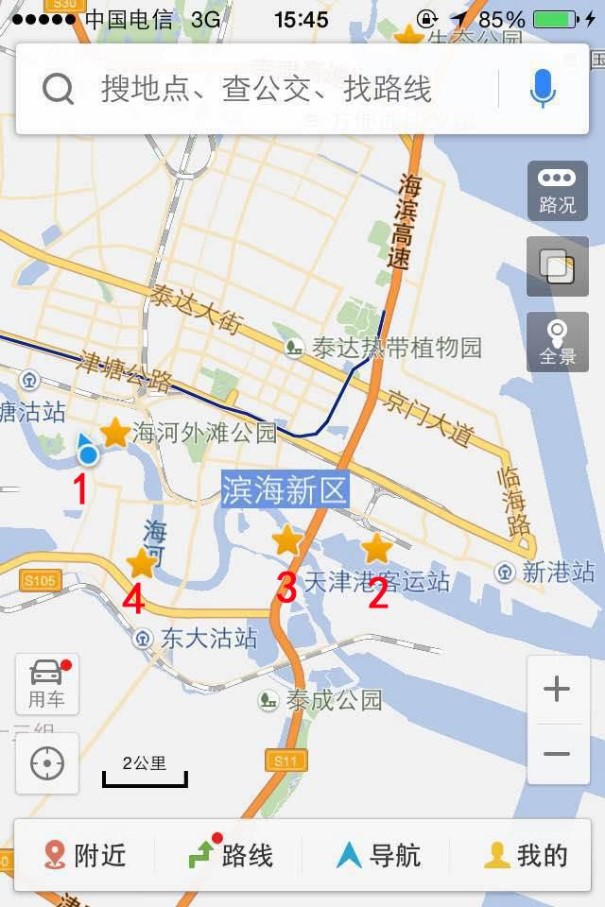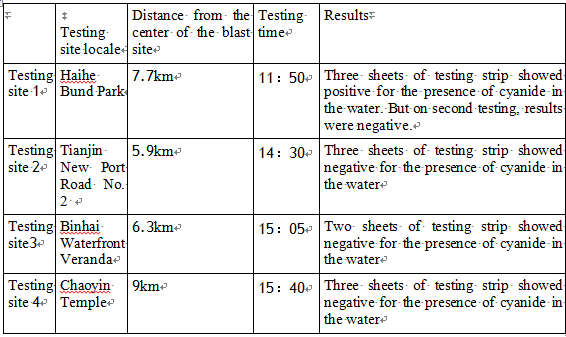Beijing, August 16 2015-Greenpeace’s rapid response field team arrived in Tianjin’s Binhai district to conduct tests for the presence of the extremely hazardous chemical, sodium cyanide or cyanide, in bodies of water around the blast site.
A total of 16 testing sites were pre-selected, two of which were within 1-2km of the center of the blast site, six of which were 2-5km distance, five of which were 5-10km distance, and three of which were 10-20km distance. Out of these, four sites were used for testing.
17 August 2015
The team exposed cyanide testing strips to water samples for two seconds, and worked under the assumption that a concentration range of 0.01%~0.1% is relatively “low” (still high compared to normal concentration in background), whilst a concentration range of 0.1%~1.0% is very high. The minimum concentration the cyanide strip can detect is 0.01% (or equivalent to 100 parts per million in other form).
Results showed that at the four sites tested for very severe levels of cyanide, high levels of the chemical were not detected.
Please note that these results show that local water supplies are not currently severely contaminated with cyanide.
They do not, however, prove or disprove the presence of low levels of cyanide in Tianjin’s water compared to normal surface water concentration.
They also do not prove or disprove the presence of other hazardous chemicals in the water.
Greenpeace reiterates its call for authorities to implement a comprehensive survey of hazardous chemicals currently present in air and water supplies and make public all information.
Greenpeace will continue to monitor the situation around the blast site in Tianjin and will continue to make public our latest findings.


